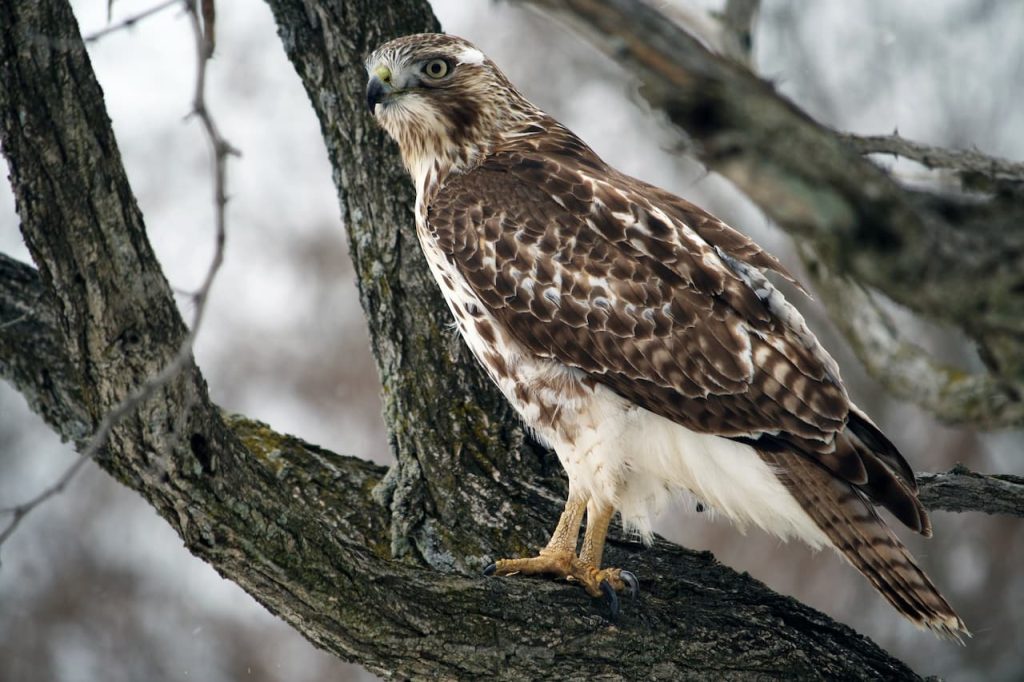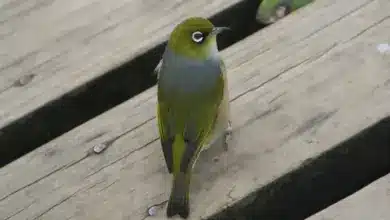The Hawaiian Hawks, Buteo solitarius, is an accipiter of the buteo genus native to Hawaii.

For residents of the Mainland, perhaps the most familiar buteo is the Red-tailed hawk. Buteos tend to be easily recognized by their bulky bodies relative to their overall length and wingspan.
The ‘Io is the only hawk that occurs in Hawai’i, where they are only known to breed on the Big Island.
The species is protected as endangered in the United States. However, the IUCN classifies the species as near threatened.
Appearance
The Hawaiian Hawk measures 16 to 18 inches in length. The female is larger than the male.
Two color phases exist:
- a dark phase (dark brown head, breast, and underwings), and
- a light color phase (dark head, light breast and light underwings).
Feet and legs are yellowish in adults and greenish in juveniles.
Breeding / Nesting
They nest from March through September, and usually lay only one egg.
The female does the majority of sitting during the 38 days of incubation, while the male does the majority of the hunting. After the egg is hatched, the female only allows the male to visit when delivering food to the nest.
The chick fledges at seven or eight weeks. Fifty to seventy percent of the nests successfully fledge young.
This solitary hawk remains in and defends its territories year round.
Diet / Feeding
The ‘Io usually hunts from a stationary position, but can also dive on prey from the air. It feeds on rodents, insects, small birds, and some game birds. They are opportunistic predators and are versatile in their feeding habits.
Calls / Vocalizations
They have a shrill and high-pitched call much like their Hawaiian name: “eeeh-oh.” They are known to be very noisy during the breeding season. ‘Io are strong fliers.
Culture
The Hawaiian hawk was a royal symbol in Hawaiian legend, and it is sometimes called “`Lolani”, or “Exalted Hawk”.
Beauty Of Birds strives to maintain accurate and up-to-date information; however, mistakes do happen. If you would like to correct or update any of the information, please contact us. THANK YOU!!!

